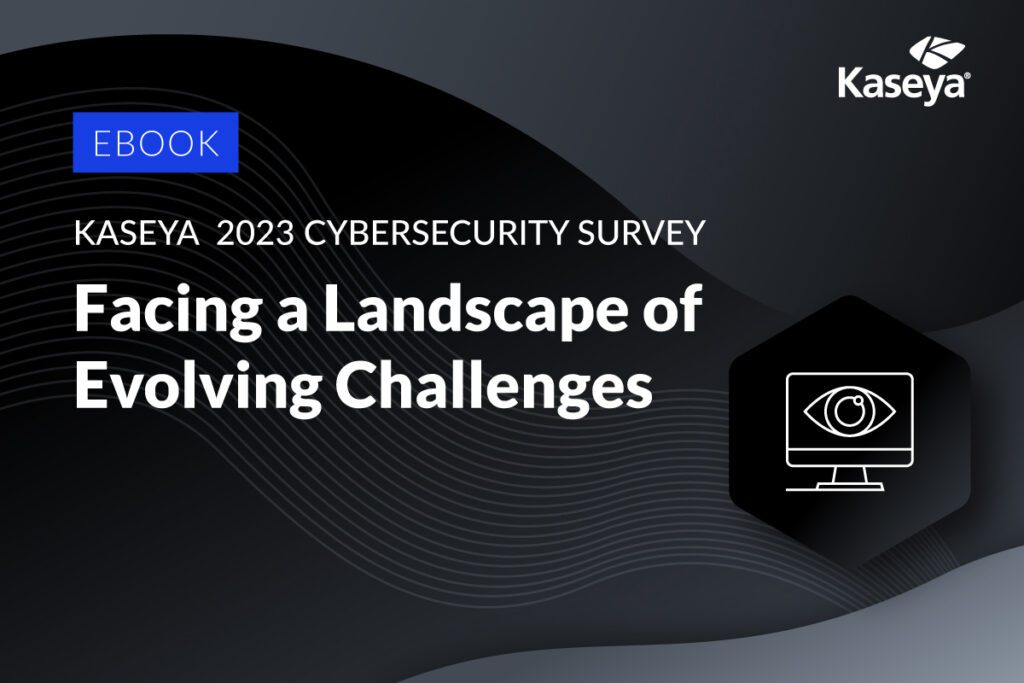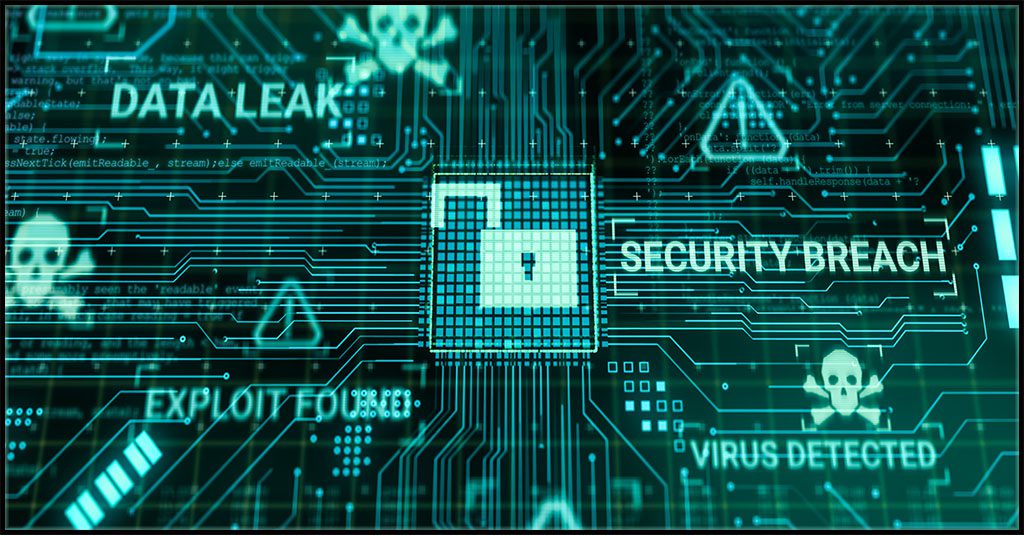The Top 5 Cyber Threats Schools Face and How to Mitigate Them

Schools are prime targets for cybersecurity trouble
In an increasingly digital world, where education relies heavily on technology, K-12 schools find themselves at the forefront of a new kind of challenge – cyberthreats. The convenience and efficiency brought by technology offers teachers and students an amazing array of learning tools. However, technological advancements and subsequent technology dependence also expose educational institutions to cyber-risks. A successful cyberattack on a school can compromise sensitive information, disrupt operations and jeopardize the safety of students and staff. It is critical that faculty and staff take action to ensure that schools and school districts enact robust cybersecurity measures to mitigate their cyber-risk, including the top cyber threats for K-12 schools.

In The Educator’s Guide to Cybersecurity, see the cyber threats that schools face & how to mitigate them. DOWNLOAD IT>>
Why should K-12 schools be concerned about cybersecurity?
Cybersecurity is vital for schools and school systems today, and bad actors are poised to strike schools that don’t take it seriously. Watchdog organization K12 SIX recorded more than 1,600 cyberattacks that resulted in a cybersecurity incident in U.S. K-12 schools and school districts between 2017 and 2022. The top cyber threats to K-12 schools can cause data exposure, learning interruption or school closure. A cyberattack can quickly become a disaster that opens students, faculty and staff up to an array of dangers.
Student data vulnerability: One of the primary reasons for schools to be vigilant about cyberthreats is the vast amount of sensitive student data they handle. From personal information to academic records, schools store a wealth of data that is attractive to cybercriminals. Infiltrating school databases could lead to identity theft, unauthorized access and misuse of students’ personal information.
Disruption of learning environments: Cyberthreats have the potential to disrupt the day-to-day operations of a school, hindering the learning experience for students. Ransomware attacks, for example, can lock access to essential systems, preventing teachers and students from accessing critical resources and materials. This disruption not only impacts the quality of education but can also result in financial losses for the school.

See the challenges companies face & how they’re overcoming them in our Kaseya Security Survey Report 2023 DOWNLOAD IT>>
Financial implications: Schools operate on tight budgets, and a cyberattack can have severe financial repercussions. Beyond the immediate costs of addressing and recovering from an attack, schools may also face legal consequences if they fail to adequately protect sensitive information. Investing in cybersecurity measures can serve as a proactive approach to avoiding potential financial burdens. The U.S. Government Office of Accountability estimates that school districts can lose $50,000 to $1 million after a breach.
Protection of teacher and staff information: While student data is a significant concern, schools also store personal and confidential information about teachers and staff. Cyberthreats targeting this information can lead to identity theft, financial fraud and reputational damage. Securing the personal data of educators is crucial for maintaining a safe and trustworthy educational environment.
Ensuring online learning security: The rise of online learning platforms has further emphasized the need for robust cybersecurity in K-12 schools. With the increasing use of digital tools and platforms, there is a higher risk of cyberattacks on virtual classrooms. Protecting these platforms is essential to ensure the continuity and security of remote learning.
Preventing social engineering attacks: Cybercriminals often use social engineering tactics to exploit individuals within an organization. In a school setting, this could involve tricking staff or students into revealing sensitive information or clicking on malicious links. Cybersecurity awareness training is vital in equipping the school community to recognize and resist such manipulative tactics.

Find out about five of today’s biggest dark web threats to businesses in this infographic. DOWNLOAD IT>>
Top 5 cyberthreats for K-12 schools
Educational institutions have become prime targets for cybercrime. Malicious actors have many reasons to go after schools. After all, schools can’t afford to shut down, are rich sources of personal data and often have limited cybersecurity resources. That’s why it is critical that educators and administrators understand the top cyberthreats that schools and school systems face.
1. Spear phishing
Spear phishing is a highly targeted phishing attack. Unlike the generic nature of regular phishing attempts, spear phishing is tailored to deceive the recipient through the use of personal details and social engineering. Phishing is the top cyber threat for K-12 schools.
Mitigation: To counter spear phishing, schools should prioritize cybersecurity training to raise awareness among faculty and staff, encouraging them to scrutinize emails, verify sender identities and avoid clicking on suspicious links or attachments. Implementing robust email filtering and authentication systems can further fortify defenses against such attacks.

Explore how AI technology helps businesses mount a strong defense against phishing GET INFOGRAPHIC>>
2. Ransomware
Schools are the top target for ransomware attacks. Ransomware is malicious software that can do massive damage to a school. Bad actors can encrypt a school’s system, steal their data and interrupt their operations. After the attack lands, an extortion payment is demanded from the school to avoid those consequences.
Mitigation: Effective ransomware mitigation strategies include regular data backups and conducting cybersecurity awareness training to educate staff on recognizing ransomware threats. Additionally, employing up-to-date security software, limiting user access to sensitive data and establishing an incident response plan can help prevent and manage ransomware attacks.
3. Business email compromise
Business email compromise (BEC) is a type of email fraud. BEC aims to trick employees into taking harmful actions, typically sending money to the attacker. BEC targets organizations of all sizes across every industry around the world. In schools, BEC often targets those who perform wire transfer payments, such as back office admin staff.
Mitigation: Schools should implement strict financial controls, including verification processes for fund transfers and regular employee training, to identify fraudulent emails. An AI-enabled email security solution will detect and quarantine more phishing messages, like BEC threats, than a conventional solution or secure email gateway (SEG).

Every business faces insider risk, from employee mistakes to malicious acts. Learn how to mitigate it. DOWNLOAD EBOOK>>
4. Supply chain risk
Supply chain risk comes from the relationships that schools have with vendors and service providers. For example, bad actors will first compromise the network of a third-party vendor or service provider on whom a school relies, then use that access or information to damage that school’s operations and data security.
Mitigation: Reducing supply chain risks requires thorough vetting of a third-party vendor’s cybersecurity practices. Schools should establish contractual requirements for security standards, conduct periodic security assessments and ensure vendors have a robust incident response plan in place to safeguard against potential breaches.
5. Social engineering
Social engineering is a manipulation technique that cybercriminals use to exploit human psychology and deceive school employees into taking actions that benefit the cybercriminals, like revealing sensitive information, supplying access credentials or sending money or something else that damages the school’s network or data security.
Mitigation: Combating social engineering threats necessitates ongoing staff training to recognize and resist manipulative tactics. Many social engineering attacks employ phishing, so training faculty and staff with phishing simulations is beneficial. Creating a culture of vigilance and awareness can help schools reduce their vulnerability to all types of cyberattacks.
K-12 schools must take the top cyber threats to K-12 schools seriously. Schools and school systems must prioritize cybersecurity to safeguard the privacy of students and staff, maintain the integrity of educational processes and protect against financial and reputational risks. Implementing comprehensive cybersecurity measures, including a regular cybersecurity awareness training program with phishing resistance training for all faculty and staff, is essential for creating a secure learning environment in today’s digital age. By staying vigilant and proactive, schools can ensure that they are well-prepared to defend against evolving cyberthreats and provide a safe space for education to thrive.

Get tips & advice to help you build a smart incident response plan in our guide. GET YOUR GUIDE>>
Schools can quickly & affordably mitigate the top threats to K-12 schools with the right solutions
Kaseya’s Security Suite equips K – 12 schools with the right tools to mitigate the top cyber threats to K-12 schools without blowing up their budget while ensuring that the school is ready for the threats of tomorrow.
BullPhish ID – This effective, automated security awareness training and phishing simulation solution provides critical training that improves compliance, prevents employee mistakes and reduces a company’s risk of being hit by a cyberattack.
Dark Web ID – Our award-winning dark web monitoring solution is the channel leader for a good reason: it provides the greatest amount of protection around with 24/7/365 human and machine-powered monitoring of business and personal credentials, including domains, IP addresses and email addresses.
Graphus – Graphus is a cutting-edge, automated email security solution that puts three layers of AI-powered protection between employees and phishing messages. It works equally well as a standalone email security solution or supercharges your Microsoft 365 and Google Workspace email security.
Kaseya Managed SOC powered by RocketCyber – Our managed cybersecurity detection and response solution is backed by a world-class security operations center that detects malicious and suspicious activity across three critical attack vectors: endpoint, network and cloud.
Datto EDR – Detect and respond to advanced threats with built-in continuous endpoint monitoring and behavioral analysis to deliver comprehensive endpoint defense (something that many cyber insurance companies require).
Vonahi Penetration Testing – How sturdy are your cyber defenses? Do you have dangerous vulnerabilities? Find out with vPenTest, a SaaS platform that makes getting the best network penetration test easy and affordable for internal IT teams.

Read case studies of MSPs and businesses that have conquered challenges using Kaseya’s Security Suite. SEE CASE STUDIES>>

Our Partners typically realize ROI in 30 days or less. Contact us today to learn why 3,850 MSPs in 30+ countries choose to Partner with ID Agent!
Check out an on-demand video demo of BullPhish ID or Dark Web ID WATCH NOW>>
See Graphus in action in an on-demand video demo WATCH NOW>>
Book your demo of Dark Web ID, BullPhish ID, RocketCyber or Graphus now!